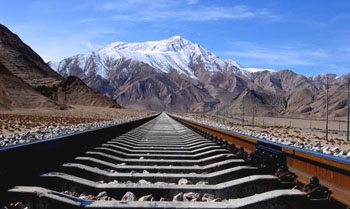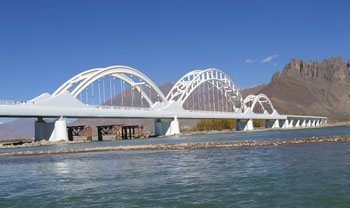China Builds World's highest railway links Tibet to rest of China


bridge on Lhasa River on the way
Of the new 1,110-kilometre stretch of track, 86 per cent is at least 4,000 meters above sea level.
At its apex, the route winds through the towering Tanggula Mountain Pass, which at 5,072 meters makes the new line the highest railway in the world 255 meters higher than the previous record-holder, a route running through the Peruvian Andes.
So, the first rail link between Tibet and the rest of China is also a matter of national pride.
Because of the thinness of the air on the route and the potential for altitude sickness, officials have taken extra precautions to help passengers enjoy the ride and keep health concerns to a minimum.
Early reports had speculated that trains would need to be pressurized like aircraft, since air at 4,000 to 5,000 meters usually contains around half as much oxygen as air at sea level.
But that was impossible, officials reasoned not only will the train pick up and drop off passengers at stations along the route, but the conductor will organize time for passengers to disembark for a better view of the scenery and wildlife.
Among the precautions, each carriage has an oxygen-generating cabinet. The oxygen is fed into two systems. One is like central air conditioning, ventilating each cabin. The other is an "emergency oxygen supply" system, with each passenger having access to a special socket, whether near the windows, under the seat or at the bedside.
It is the system's constant hum that reassures passengers the air is still OK.
Perhaps even more comforting is the news that at least one doctor will travel on each train when regular service starts, said Zhao Shiyun, chief engineer of the Qinghai-Tibet Railway Construction Headquarters in Xining, Qinghai's capital.


